I recently wrote a blog post on Victorian nightgowns and found them so fun to look at. I love the idea that so much thought and care was put into garments that wouldn’t be admired by many people. And of course, there is the simple fact that so much of what women wore in the Victorian era is just so darn pretty. As someone who wears just a couple of old t-shirts to bed no matter what time of year, I sure appreciate the beautiful nightwear that has survived from the Victorian era. But what about the often accompanying accessory to the nightgown, Victorian nightcaps?
I came across many surviving nightcaps while I was researching the history of nightgowns and thought it might be fun to do a follow-up post on this dainty item. I discovered that they were even more practical than nightgowns worn in the 19th and early 20th century, as they were primarily used for warmth and for the application of overnight perfumes for the hair. And much like the nightgown, while I was able to collect images of Victorian nightcaps that have survived the passing of time, there are few mentions of them until after 1900.
Would you be comfortable wearing a nightcap to bed?
Nightcaps before 1800
Something that surprised me about the history of nightcaps is that more survive from before 1800 than that of nightgowns, and the designs changed drastically over time. Prior to 1800, they were skullcaps worn close to the head for warmth. Those that survive are ornately embroidered caps made of fine fabrics. Most of the examples I found are nightcaps worn by men, though surely women needed to keep their heads warm as well.
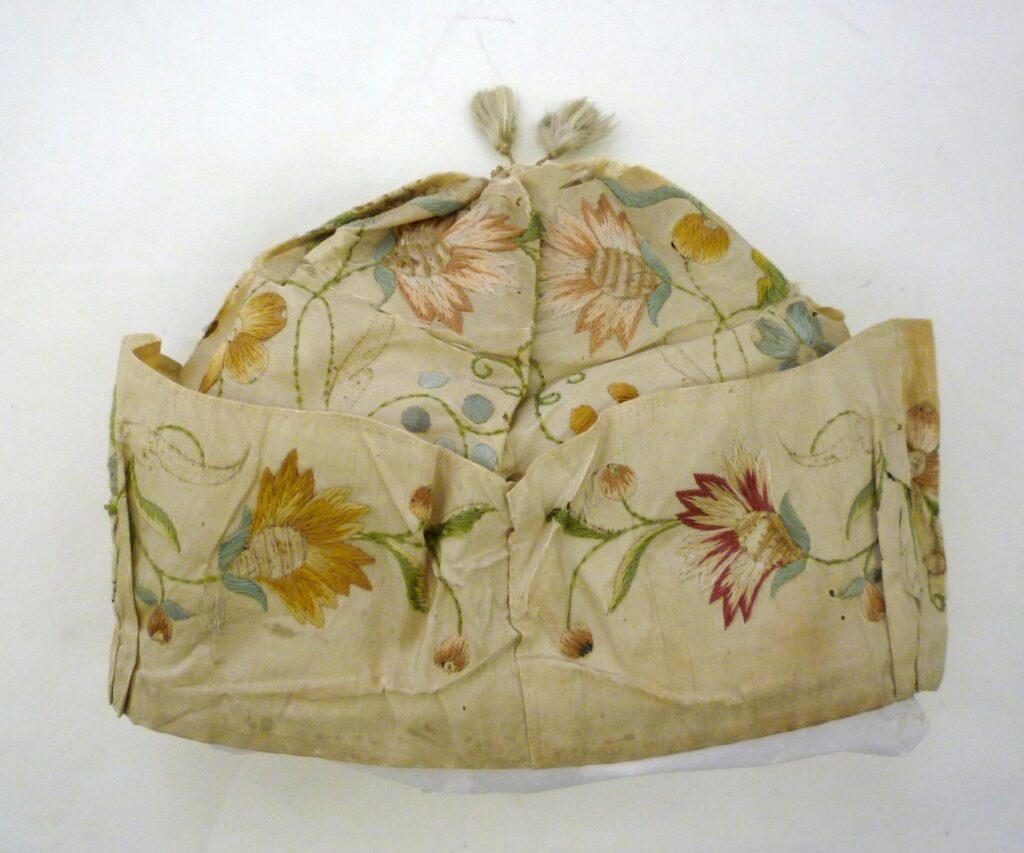
One of the reasons the surviving nightcaps are so beautiful is that during the age of wigs worn by men, nightcaps served as double duty around the home in place of a wig, both for warmth and because it was fashionable for a man to keep his head covered.
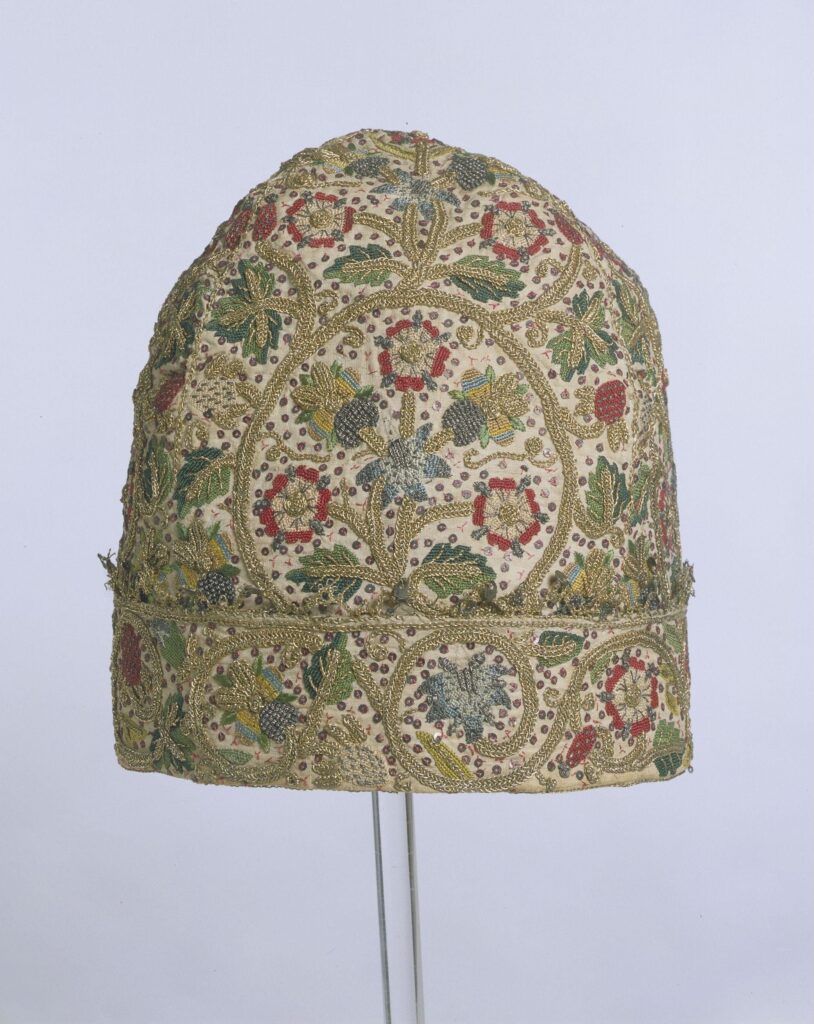
Victorian nightcaps
Similar to the nightgown, Victorian nightcaps swung in the opposite direction of showiness during this modest era. These caps had two purposes, keeping one warm in the large and cold bedrooms many people slept in, and occasionally for perfuming the hair. While you may read nightcaps were worn by women in order to keep their hair curls and protect their hairdo, I don’t believe this is the case. Many beauty and hygiene books that I have referenced through the years encourage women to brush their hair before bed and fail to mention the importance of keeping a cap on for the sake of preserving any look.
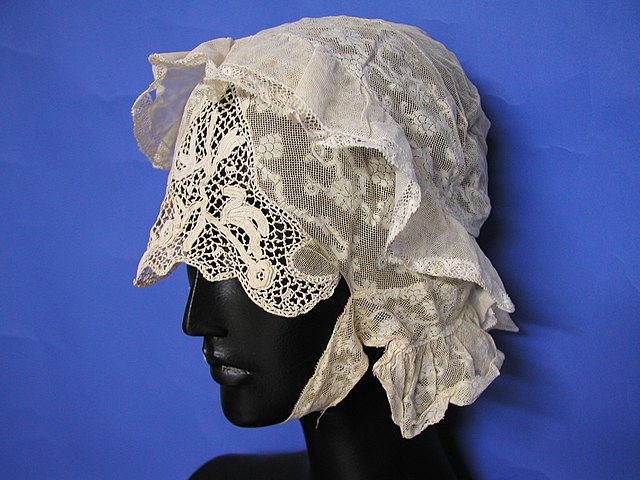
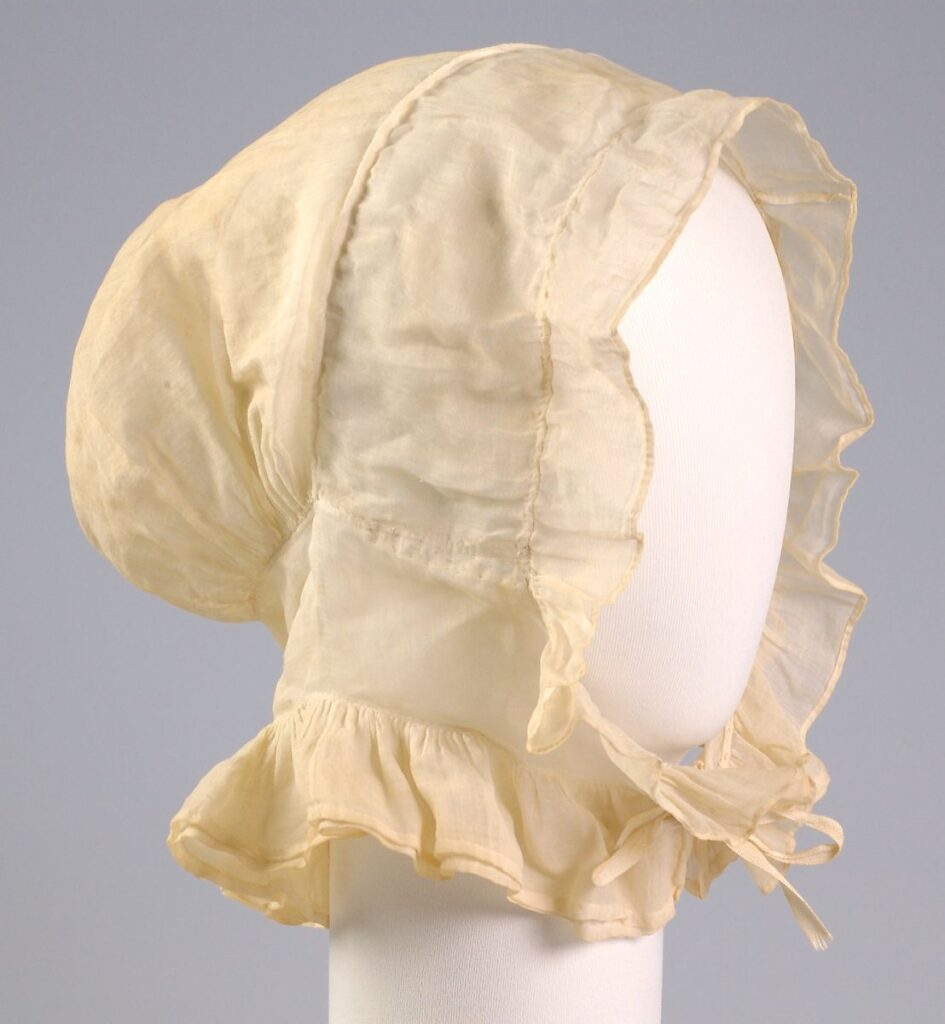
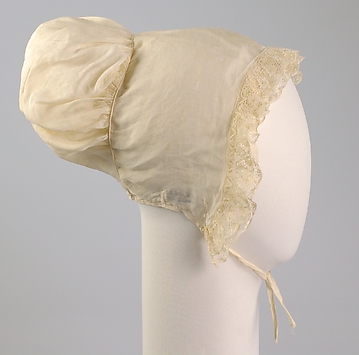
Perfume your hair with a nightcap
Remedies for perfumed hair became more common in the 1910s and 1920s, when nightcaps became more colorful and showy along with nightgowns. I am sure that it was a practice used with Victorian nightcaps as well, though I have yet to find a reference to it or a recipe for an overnight application.
A 1910 article from the San Jose Mercury News titled “The Woman’s Crowning Glory Demands Intelligent Care” says of this practice:
“Perfumed locks are made sweeter still by the habit of sleeping In nightcaps. The nightcap Is another of the revivals. There are close little caps, which are fitted to the head and which are lined with sachet powder.
Health and Beauty, written by Margaret Mixter and published in 1910 includes a recipe for a DIY overnight perfume that required use of a silk cap (which grew more and more popular through the 1920s). It reads:
“Between the inner and outer cap any kind of sachet desired is sprinkled thickly. I am always a strong advocate of orris root, for it is sweet, lasting, and never cloying. If the cap is tufted at intervals there will be less danger of the powder settling in one part.
To use the cap for best results the hair should be thoroughly brushed and combed at night and then done in a loose braid. The more evenly hair is exposed to the cap the more it will take the sweet odor.”
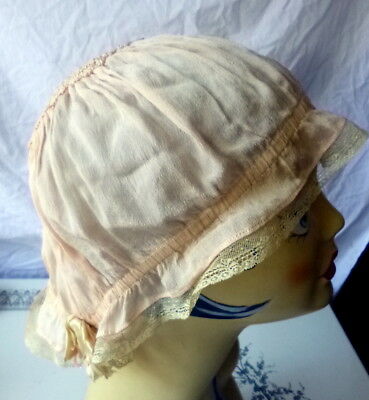
Roaring twenties nightcaps
As for the type of cap Mixter says should be used, it reflects that changing trends seen in all women’s nightwear beginning in the 1910s. She suggests:
“A dusting cap pattern is practical, the covering merely a circular cloth large enough to keep the hair free and allow circulation of air. It is fitted to the head by an elastic, are being taken that the latter is not too tight…The material for the cap depends entirely on the amount of money a girl wishes to spend. Silk, of course is best…”
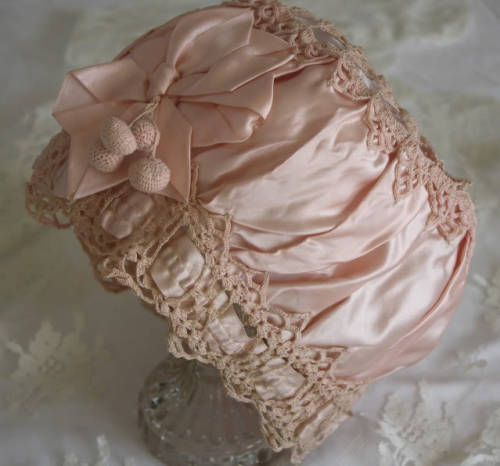
Colorful nightcaps emerged in the 1920s and were discussed as a new trend, although in actuality they had been used for practical purposes for many years. Sew Historically sites a 1910 Inyo Independent article that reads:
“Hush-h-h! It is quite possible you know it already, but it is a secret, just the same, and it never would do to have it talked about; but the fact is that all we girls are going back to the fashion of our grandmothers and – yes, wearing nightcaps.”
This article is also the first place I have found reference to a nightcap being worn to preserve a hairstyle and confirms my belief that this is not why Victorian women wore them. It reads:
“…the nightcap of to-tay is a very different affair from those that were worn fifty or sixty years ago. Those were frankly ugly, usually made of some coarse and heavy material, which covered the head completely, extending over the ears and under the chin. They were worn for warmth, for there was no steam heat at that date, and bedrooms were often chilly.”
And as for preserving one’s curls, the article reads:
“With the elaborate staples of coiffure that now are in fashion women find they can fritter away a most unwelcome proportion of their pin money on their hairdressers, and they have taken to nightcaps so that after their hair has been fixed up for dinner or theater party in the evening they can save it from being mussed up at night and preserve the effect of a single visit to the hairdresser for at least two or three days.”
How well do you think these caps would have worked for spacing out visits to the hairdresser?
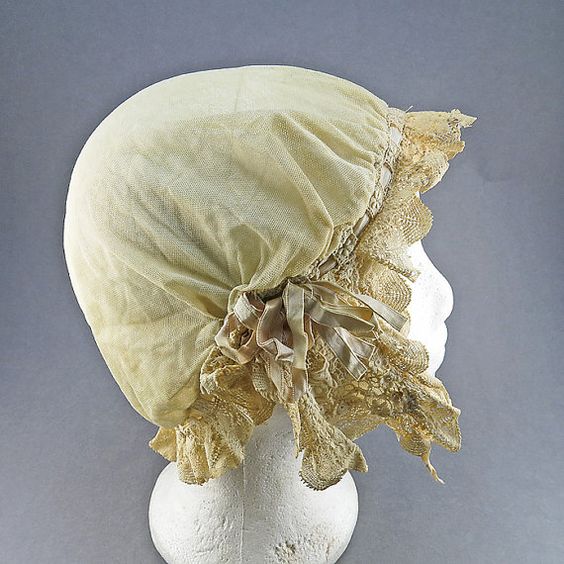
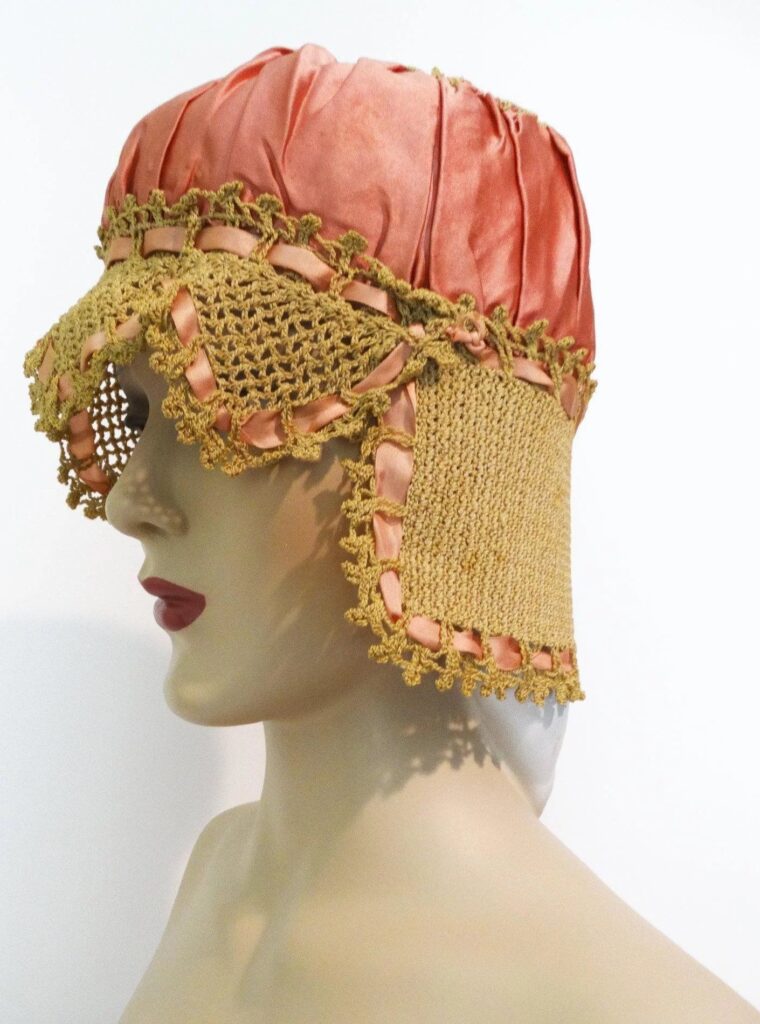
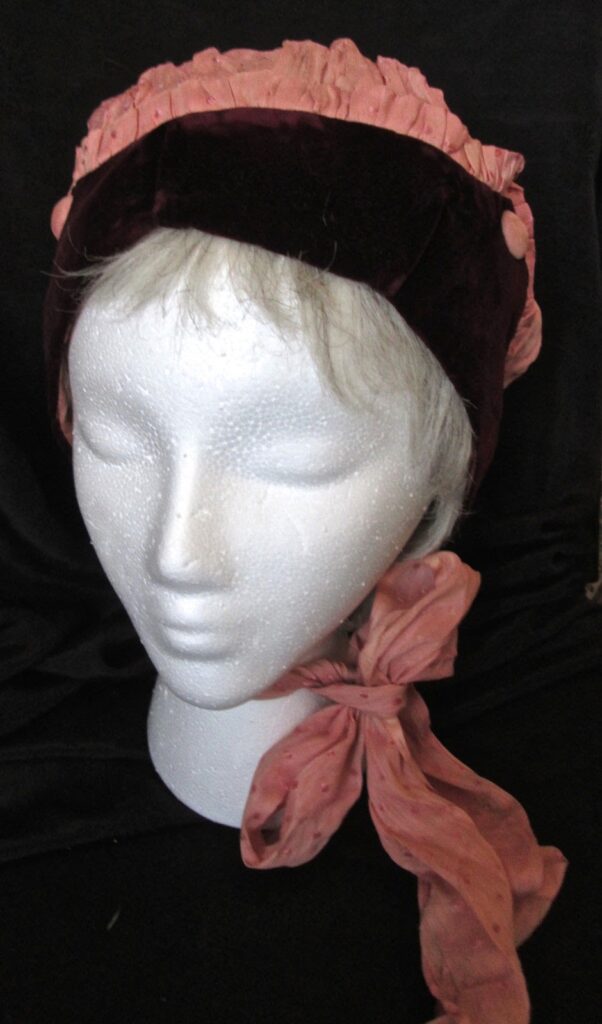
More fashion history fun:
Bonnets through history: can you tell them apart?
A short history of the hand muff, one of history’s cutest accessories



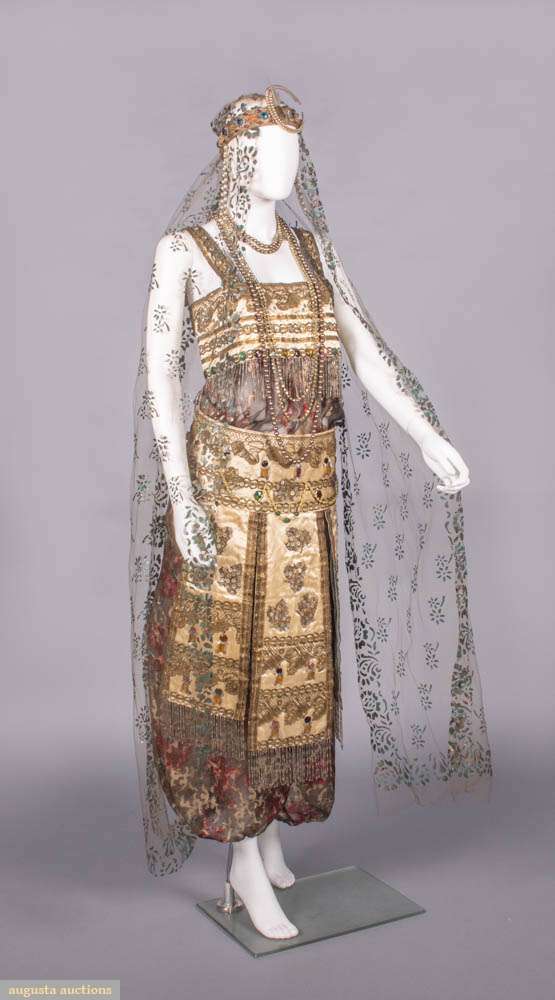










Yes, ladies in the 40s and 50s wore their versions of nightcaps after pincurling their hair – my mother did! And I still wear one at night when I let my hair go naturally curly – it preserves the curls and prevents frizzing. I simply twist a strand and put it under my cap, then twist another one, and so forth. In the morning, it resembles dreadlocks LOL, but I just shake it out with my fingers and viola – beautiful natural curls!